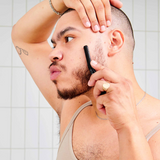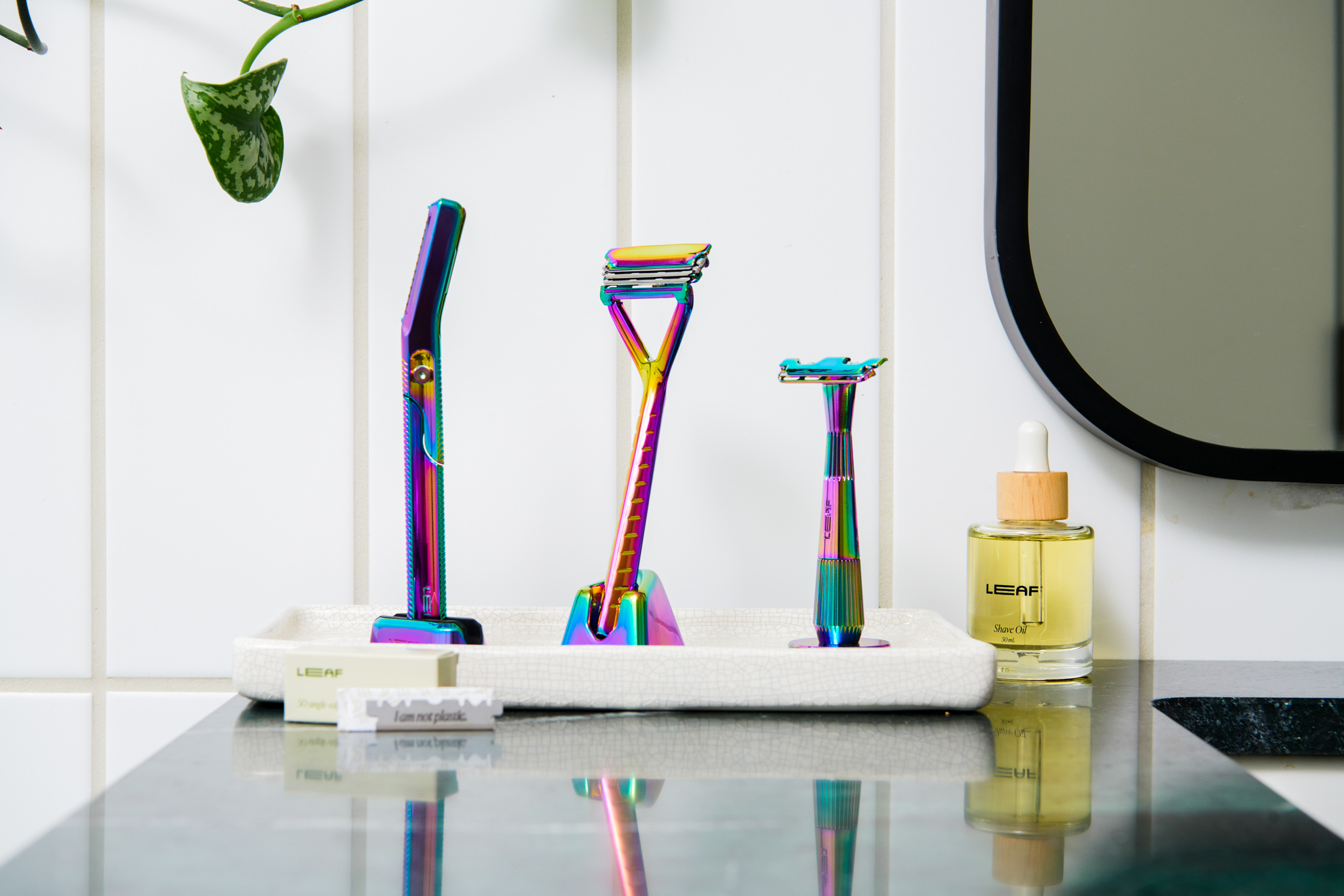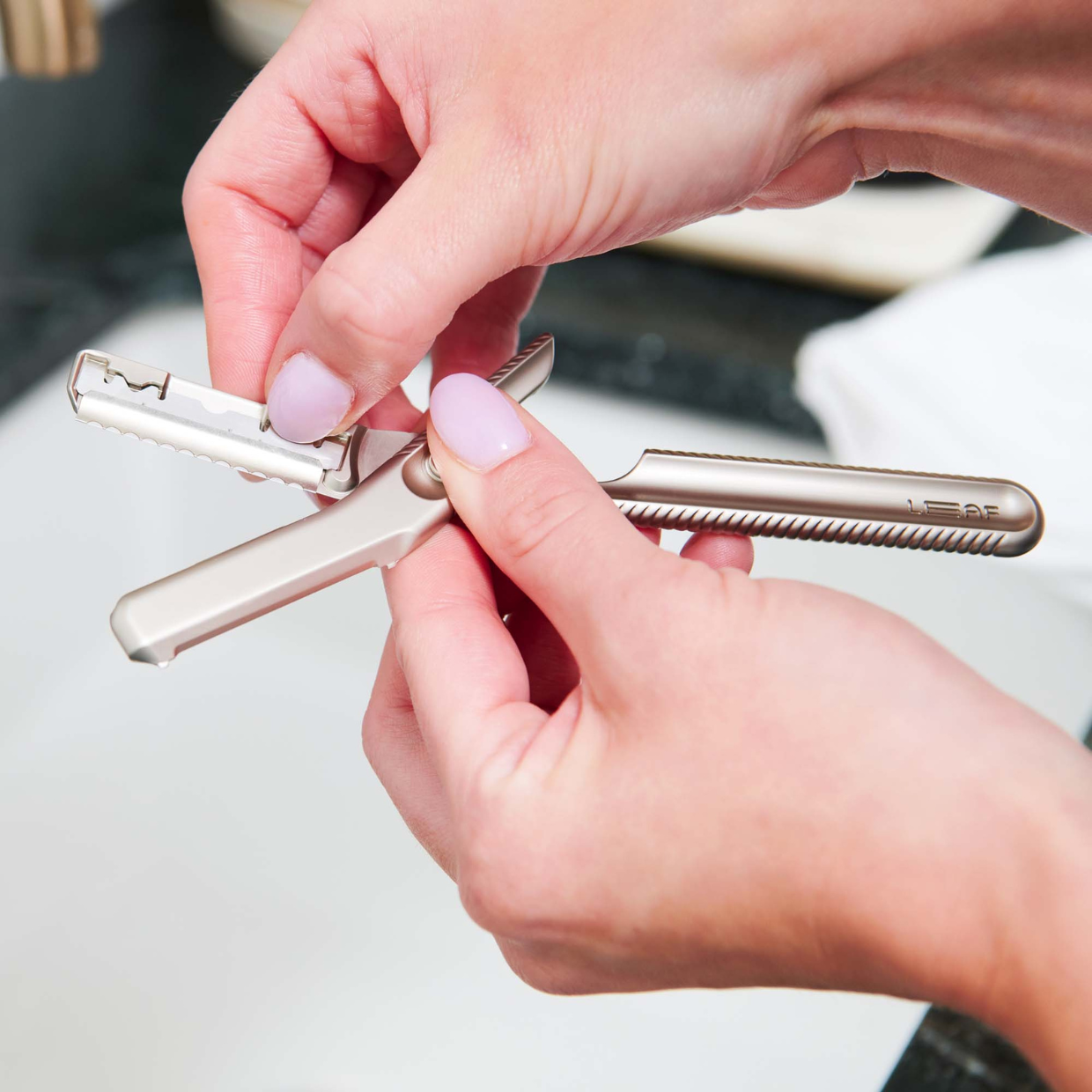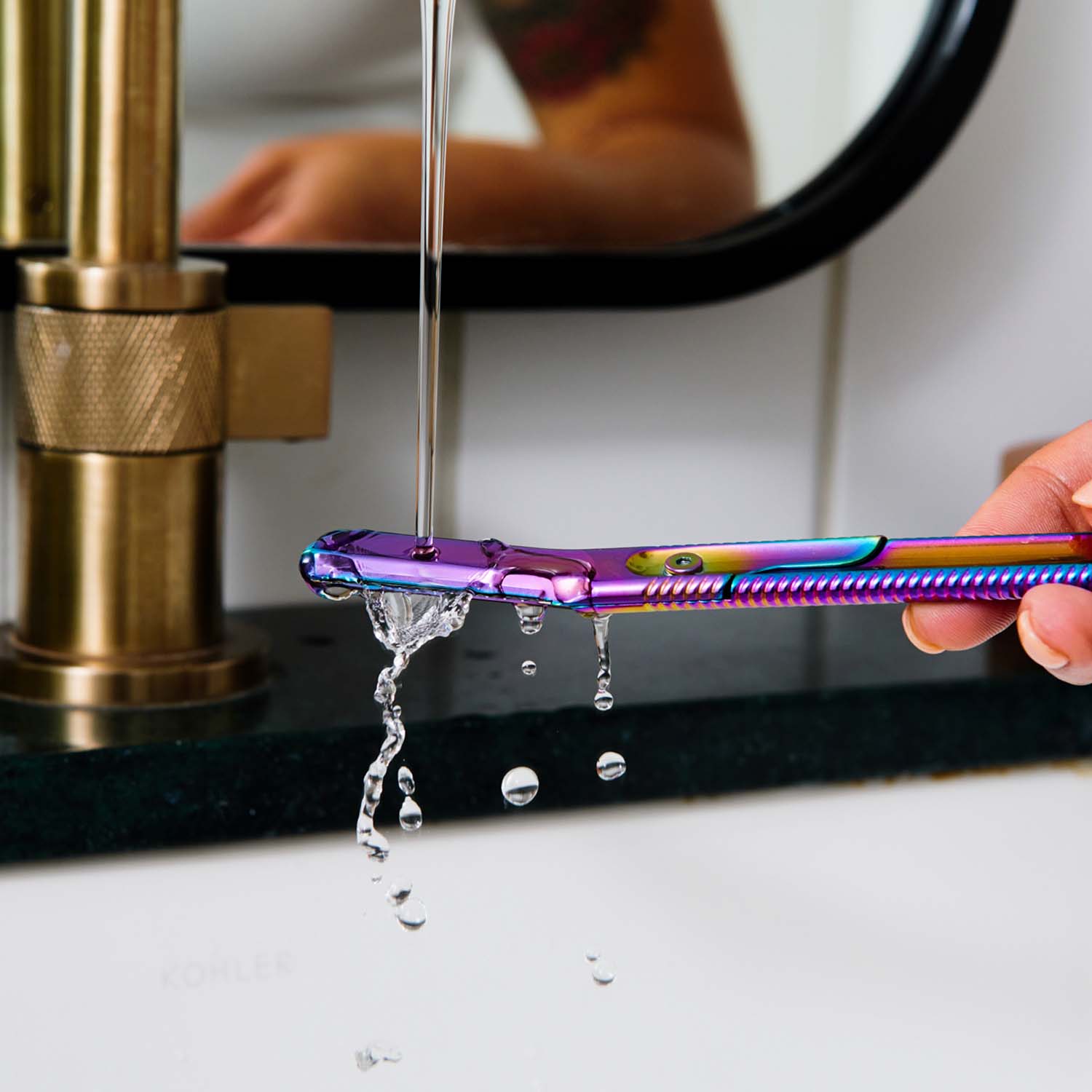Why use a Leaf Shave Dermaplaner?

The Leaf Shave Dermaplaner has arrived in the UK at Agent Shave. What is a dermaplaner and how would you use it? We asked Adam at Leaf Shave everything you need to know about dermaplaning!
The plastic free dermaplaner!
We were excited when we uncovered this opportunity. At-home use of dermaplaners (AKA eyebrow razors AKA touch-up razors) has been growing rapidly over the previous decade. This is a *perfect* problem for Leaf Shave to tackle because the current state of the art is either fully disposable plastic dermaplaning tools; or high-priced luxury tools with over-priced refills. Sound familiar?
We knew that if we could leverage safety razor blades, so abundant and inexpensive, that we could build a beautiful dermaplaning tool. After familiarizing ourselves with the array of dermaplaning tools currently being used, we realized that we could not only eliminate plastic, integrate safety razor blades safely; but also build a tool that was MORE effective delivering BETTER results than the tools currently in use. So we set to work.
The biggest technical problem we had to solve was that these tools are traditionally marked by 'guarded' blades. Either wires or scalloped guards welded onto the blade itself. The purpose of this is to prevent direct full-length contact of the blade in untrained hands.
Dermaplaning is an effective procedure for your skin that is often performed in a clinic at the hands of an aesthetician or dermatologist. They're going to use a bare blade to "plane" your "derma" (remove a layer of skin cells). This level of exfoliation is deep, penetrating. And best left to the hands of professionals.
When someone does this to themselves, at home, they use a tool like the Leaf Dermaplaner. The blade is guarded, this renders it MUCH safer to use, and in fact quite easy to use. The exfoliation you get at home is less intense than what you'll experience in a beauty clinic, but still offers numerous benefits and is quickly being adopted into skincare routines globally.
So we had to engineer a solution (our Leaf blade-guards) that could wrap a traditional safety razor blade with our scalloped protection. Turning a bare shaving blade into an at-home dermaplaning blade! Once we figured out we could accomplish this technically with materials and production processes available to us, we built the handle around it focused on durability, longevity, balance, aesthetics, and importantly safety.
What is dermaplaning?
At-home dermaplaning is a process that is mechanically different from shaving. The two major differences are in the guarded blade that I just covered -- and in the angle-of-attack. Shaving razors present blades at a much shallower angle against your skin. On the other hand, when you dermaplane you want a larger angle because your goal isn't to sheer through hair, rather to scrape dead skin cells off your face. This process also removes vellus hair (peach fuzz) in the process.
You can use the dermaplaning tool on dry-skin, or skin prepared with oil (like our Leaf Shave Oil). Which approach is right for you is something you may experiment with and discover, or ask your dermatologist for guidance.
The Leaf dermaplaning tool has the correct blade-angle built into the material surrounding the blade, so finding that angle is easy simply lay it against your skin along the flat plane surrounding the blade. Then hold your skin taught behind the blade, and use short, light, feathery strokes. Starting up near your temple and work down and inward along your cheek. You can continue along your forehead and jawline as well, as desired.
This is how they're traditionally used, most often by women in their skincare / beauty routines whether they're looking to remove peach fuzz or dive in deeper for some exfoliation. How often depends on your skin, always best to listen to it, but most folks do this once a month, some more frequently a couple times a months and others might only do this a few times a year. A tool like this can also be used to help maintain eyebrows by providing a tool for shaping. We designed what we call our Precision Clip, that ships with every Dermaplaner, and this clips onto the working edge of the tool covering a portion of the blade if you want to "shorten" the exposed blade when working on smaller areas for precision / detailing work.
Any person can use Dermaplaner, though there are some important things to understand about how it works. This is a tool that is most traditionally used by women as the hair on their face is mostly peach-fuzz / vellus hair. Because the tool approaches skin at a wider angle (45 degrees) and is guarded by scallops it is not a good "shaving razor" for thick / traditionally masculine beards or facial hair.
Personally, I use mine every now and then to clean up the lighter hair around my temple if I notice it after a head-shave. And to help maintain my pretty busy eyebrows. Also, during development I wanted to experience the exfoliation part of the tools and took it to my forehead. WOW. Turned over the skin and felt so good haha. I do this every now and then too now. A little self care :).
Best practice tips for using the dermaplaner
If you're unfamiliar with using tools like this - then the common tips apply:
- Take your time, use lighter pressure as you get a feel for how it works!
- At Leaf Shave HQ our team loves using shaving oil paired with the Dermaplaner, it really helps keep things moving safely and bonus points for keeping your skin hydrated through the process.
- We also suggest changing your blade / blade-guard every few uses at the most. The primary reasons here are you want sharp fresh blades for most effective use, and when you're working on the skin on your face you want to maintain good hygiene with your tools.
- Many users will clean their blade / guard with alcohol between uses.
Is there a downside to dermaplaning?
Will dermaplaning cause stubble or make my hair grow back quicker?
No, you cannot change the physiology of your hair by removing it / shaving it (reference). When hair grows back, it may appear darker / thicker only because a blunt tip is leading the growth, this will soften over time to it's natural state.
Will my skin look worse after dermaplaning?
Everybody is different, so it's certainly best to listen to your skin after trying something new, and / or consulting with your dermatologist if you have any questions about your skin. However, most people doing this at home experience better-looking and feeling skin after dermaplaning.
What are the benefits of using a dermaplaner?
There are many benefits to dermaplaning, including:
- Softening and brightening your skin (honestly it will feel really good afterward)
- Evening tones and textures - This may help with hyperpigmentation and lessening the appearance of scars.
- Allows better absorption of skincare products and serums, as well as makeup in a beauty routine.
We would like to thank Adam and the team at Leaf Shave HQ for taking time to talk dermaplaning! We love the design of the Leaf Dermaplaner and we hope you do too! All orders over £50 at Agent Shave are posted free in the UK.




